Children’s Dentist Eugene
Caring for the Littlest Smiles in Your Life
Maintaining regular - at least twice a year - dental visits is important to children's dental health. We strive to create and maintain a positive working relationship with the pediatric dental patients who visit us. How your child feels about dental care in their youth can greatly impact their long-term dental health.
We hope to show them the tools we use, explain the treatments we perform, and discuss the techniques that can help keep their teeth healthy. Additionally, we want to make predictions in their oral health taking the teeth placement and decay levels into consideration. There are steps that we can take to put them on a better course.
With a growing number of sweet treats designed to tempt children of all ages, it is difficult to keep track of what all is going into their mouths. Even with close moderation at home, there are still chocolate cakes at birthday parties and cherry pies during the holidays, random ice cream sundae nights, and those days you just want to split a candy bar with your best buddy. Here at College Hill Dental, we understand how hard it can be to protect your child’s mouth from the dangers of harmful bacteria. Fortunately, our children's dentist in Eugene can teach your kids how to take care of their teeth from an early age, and most damage that can be done from tooth decay can be prevented with awareness.
Why Choose College Hill Dental for Children’s Dentistry?
- Focused on Preventing Problems Before They Start
- In-Network with Many Leading Dental Insurance Plans
- Pillows, Blankets, Noise-Cancelling Headphones, & Other Amenities Offered
Dental Checkups & Teeth Cleanings for Kids

The earlier your son or daughter starts getting comfortable in the dental office environment, the more likely they are to maintain healthy smiles well into adulthood. We recommend that you bring your child in for their first dental checkup by the time they turn one year old, and every six months afterward. At these visits, we’ll have the chance to monitor their oral development and catch and solve any issues early on. We can also give you personalized advice on caring for their little smiles at home.
Dental Sealants

Regular brushing and flossing are essential for keeping your teeth clean and healthy. The American Dental Association recommends that you brush twice a day and floss at least once a day. Even with good oral hygiene practices, however, there are some areas of your mouth that are harder to maintain than others. The chewing surfaces of your molars are particularly vulnerable to cavities. They contain deep grooves and crevices that can easily trap food particles, bacteria, and other debris. At College Hill Dental, we can provide additional cavity protection with dental sealants.
Regularly visiting us here at College Hill Dental and maintaining good oral hygiene can help you keep your gums and teeth healthy. However, even with your diligence, you may still be prone to developing cavities as well as other tooth problems. If you want your teeth to have maximum protection, you should get dental sealants. Essentially, dental sealants are coatings made of plastic material, which are placed on occlusal or the chewing surfaces of permanent teeth. Sealants are typically used on the premolars and molars.
What Are Dental Sealants For?
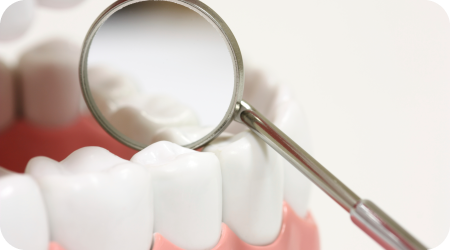
The ocular surfaces of the premolar and molar teeth have fissures on them, which makes them susceptible to decay. It can be a challenge to clean these fissures or grooves with simply a toothbrush since these fissures are typically deep and narrow. Plaque tends to build up in these areas. The bacteria in the plaque produce acids, which attack the enamel, leading to the formation of cavities. Dental sealants cover these grooves and hence provide more protection for the teeth.
While dental sealants are typically placed on the premolars and molars, they can also be used to protect other teeth that have pits. It is best to use dental sealants as early as possible, but they can still be used on adult teeth that do not have fillers yet.
How Are Dental Sealants Placed?
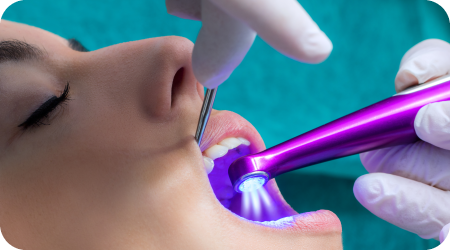
The process of placing dental sealants is painless. There is no need for drilling or anesthesia. Before a dental sealant is placed, you can expect your tooth to be cleaned and polished first to get rid of the plaque and other elements that may be present in its grooves. Next, the tooth will be isolated and dried to keep saliva off the pits. After this, the fissures will be etched, and the tooth will be dried again. Once the tooth the dry, the dental sealant is then applied to the surface of the tooth and is allowed to bond to it for a couple of seconds. The dental sealant will then be evaluated. Once it has hardened completely, you can use that tooth to eat and drink normally again.
Why You Should Get Dental Sealants?

One of the most important benefits of getting sealants is that it will help to protect your teeth. You will be able to save more money in the long run. Sure, you will need to spend money to get dental sealants but consider them as investments. Besides, the cost of dental sealants is significantly lower than the cost of treating cavities and other tooth problems. Aside from being able to save money, you will also get to save time and effort. Dental sealants will reduce your chances of developing cavities, which means that you would not have to deal with oral health problems that much, if at all.
Dental sealants can help you maintain good overall oral health. Cavities lead to tooth decay, and tooth decay can give rise to more serious oral health concerns. Prevention is always better than cure, and getting dental sealants is an effective way to keep your teeth healthy.
Fluoride Treatments

Regardless of your oral hygiene practices, the chances are good that you will experience tooth decay at some point in your life. However, there are steps you can take to protect your teeth and reduce these occurrences. At College Hill Dental, we offer professional fluoride treatment to prevent tooth decay and help you maintain excellent oral health.
What Is Fluoride?
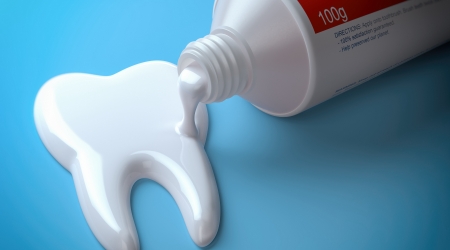
Fluoride is a naturally occurring mineral found in many of our foods and drinking water. This mineral helps prevent dental caries, more commonly known as tooth decay, from destroying the enamel, or outer layer of the tooth. Tooth decay is the direct result of the acid-producing bacteria found in plaque that constantly collects around the teeth and gums. These bacteria feed on simple carbohydrates like sugar. The more they feed, the more acids they produce. The acids eat away at the enamel through a process known as demineralization.
Demineralization happens every day when the enamel loses vital minerals the acids attack the tooth. Fortunately, teeth also regain minerals through the foods and liquids we consume. This process is known as remineralization. Tooth decay occurs when the rate of demineralization exceeds that of remineralization. This is where fluoride treatment comes into play. Fluoride treatment supplements the process of remineralization, which prevents the decay caused by acid attacks from bacterial plaque buildup.
In-Office Fluoride Treatment

There are two types of fluoride treatment: systemic and topical. Systemic fluoride treatment involves the ingestion of fluoridate water or a fluoride supplement. This type of treatment strengthens the teeth from the inside out. The maximum reduction of tooth decay occurs when fluoride treatment is both systemic and topical.
In-office fluoride treatment involves the application of topical fluoride. Topical fluoride comes in several forms, including gel, foam, varnish, or a liquid solution. During your appointment, one of these types of fluoride will be applied to your teeth using a cotton swab, brush, or tray that is held in the mouth.
Most fluoride treatments typically take a few minutes. Once your treatment is complete, we will ask you to refrain from rinsing, eating, or drinking anything for at least 30 minutes. This gives the fluoride ample time to properly absorb into the enamel and strengthen your teeth. Fluoride can even reverse microscopic instances of decay if they are caught early enough.
Who Qualifies for Fluoride Treatment?

Any patient, child or adult, can qualify for fluoride treatment. Fluoride treatment is especially important for children, teenagers, and older patients. Studies have shown that these patients are at a greater risk of developing tooth decay. Depending on the condition of your oral health, Dr. Paskalev may recommend a fluoride treatment every three, six, or 12 months. If you are at an increased risk of decay, we may also recommend additional preventive measures.
Fluoridated mouthwash and fluoride supplements can provide the extra protection you need! Of course, fluoride treatment is not a substitute for regular oral hygiene practices. Be sure you continue to brush your teeth twice a day with an ADA-approved toothpaste, and floss once a day.
Tooth-Colored Fillings
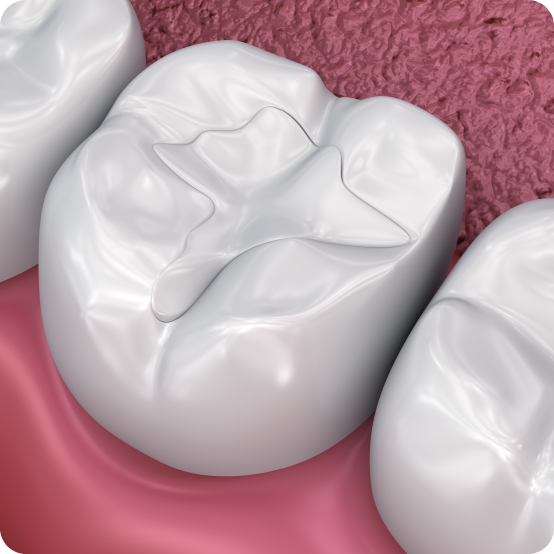
Composite tooth filling material can help you change the look of your smile. We can change old, stained fillings to new, swap metal fillings, and even repair teeth through a process known as bonding with this tooth-colored filling material. The composite filling material is comprised of crushed quartz that has been blended with resin; it can be shaded to match your teeth. The composite is strong and highly durable. With it, we can beautify your look.
Amalgam Fillings
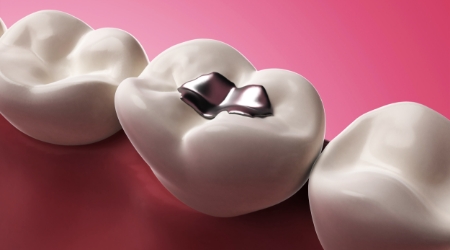
Amalgam is the traditional metal filling that has been used for decades in the repair of teeth. It is most noted for its dark silver coloring and is often loved for its strong durability and longevity. Amalgam is formed using various metals that are blended with a small amount of mercury. The presence of mercury can cause some patients concern, but the level used is well within the safety parameters recognized by the American Dental Association.
Patients like amalgam fillings because:
- Strength: Amalgam fillings allow more pressure to be applied to the tooth without breakage versus composite fillings.
- Longevity: We have decades of research and data to demonstrate the longevity of this material, it has proven to be able to remain in place for many years.
Patients dislike amalgam fillings because:
- Dark Color: Amalgam fillings are dark in color and can sometimes be seen through the translucency of a tooth. Due to its dark color, we generally only place amalgam in back molars.
- Placement: Amalgam does not adhere to the tooth, this means that we need to shape the tooth to fit the amalgam, often resulting in more tooth structure removal.
Composite Fillings
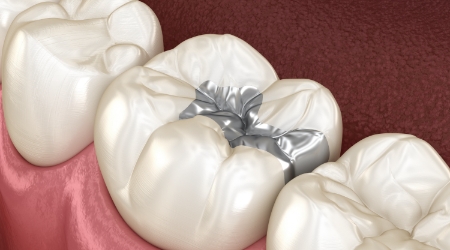
Composite fillings are now the preferred filling material for most patients. The material used today is strong and better than ever. Composite fillings are made using crushed quartz that is blended with a resin material. Composite material can be shaded to match your teeth and is metal free.
Patients like composite fillings because:
- Hidden: Composite fillings can be matched in shade to your tooth color, this helps the repair work be hidden in your mouth.
- Metal Free: Though amalgam is within safety guidelines, the metal still causes some patients concern, they like having a metal free option.
- Remove Less Tooth: Composite material does adhere to the tooth. This means that we only need to remove the damaged or decayed portion of the tooth. It is always best to retain as much natural tooth as possible.
Patients dislike composite fillings because:
- Expense: Composite fillings are more cost than traditional amalgam.
- Breakage: Though rare, composite fillings are more subject to breakage than amalgam.
Athletic Mouthguards

Oral-related injuries are the most numerous forms of injury obtained when engaging in team and individual sport. From broken, fractured teeth, to fully avulsed or knocked out teeth, children, teens, and adults, statistically take a big hit when being active. The answer is not to avoid playing outside; we want you to be active, we also want to protect your teeth. A bite guard can let you do both.
Some sports require mouthguards or bite guards, but our patients should consider them even when they are not. If you are playing with a ball, a bat, running, climbing, or riding something on wheels, a sports guard is right for you.





